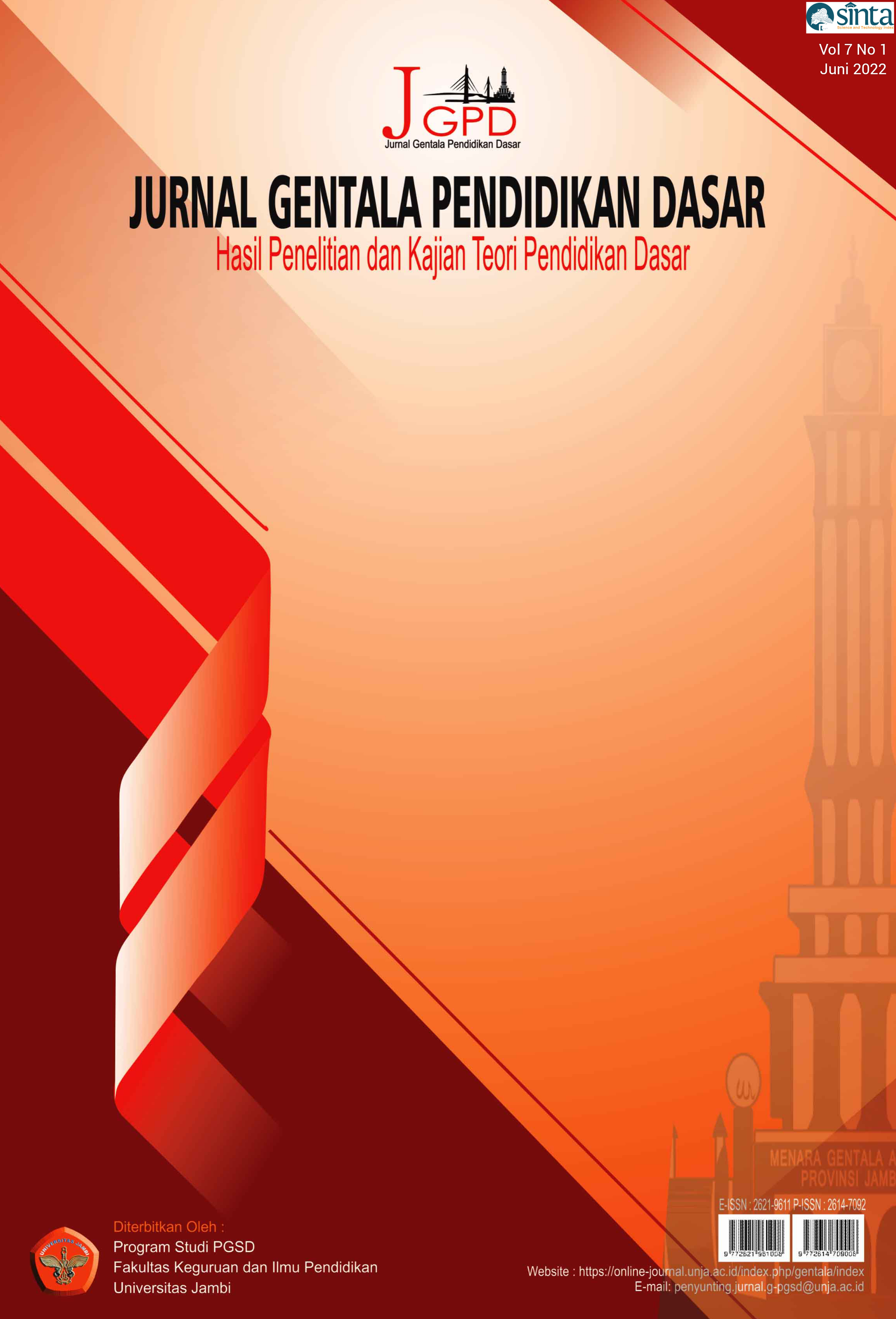Analisis Buku Tematik II Kelas III Kurikulum 2013 Menyayangi Tumbuhan Dan Hewan Untuk Pembelajaran Abad Ke-21
DOI:
https://doi.org/10.22437/gentala.v7i1.18131Keywords:
Learning, Thematic, Curriculum 2013, 21st CenturyAbstract
This research is based on Pujiriyanto’s perspective (2019) regarding educational theory and learning implementation methods in accordance with the 21st century. The learning process must always be dynamic, which is always able to adapt learning models and activities to the various characteristics of the current students, whose mostly known as the millennial generation (z) today. Unfortunately, the majority of teachers in Indonesia only rely conducting their learning activities from thematic books provided by the government to implement the Curriculum 2013.
This issue has risen as many education experts discussed the great difference of learning characteristics between the teachers and students in this era, and this could lead to problems in reaching the goal of Curriculum 2013. Having this concern, this research was needed to be conducted to analyze the learning activities in the Thematic Book II “Menyayangi Tumbuhan Dan Hewan†Grade III Elementary School.
The research approach is a qualitative approach and it used qualitative content analysis method. The data of the research are the learning activities that are found in the teacher's and the student's books of the chosen thematic book based on the characteristics for 21st century learning. The results show that the thematic book can no longer meet the characteristics of generation (z) students, thus cannot be used as an effective learning resource that facilitates students to achieve learning goals in curriculum.
Downloads
References
Anggito, A., & Setiawan, J. (2018). Metodologi Penelitian Kualitatif. Sukabumi, Jawa Barat: CV Jejak.
Bishop, J. (2006). Partnership for 21st Century Skills. For the Learning of Mathematics, an International Journal of Mathematics Education, 7-11.
Creswell, J. (1994). Research Design: Qualitative and Quantitative Approach. London: SAGE Publications.
Dominick, J. (2000). Mass Media Research, an Introduction. Belmont CA: Wadsworth Publishing Company.
Koehler, M. J., Mishra, P., Ackaoglu, & Rosenberg. (2013). The Technological Pedagogical Content Knowledge Framework for Teachers and Teacher Educators. Commonwealth Educational Media Centre for Asia.
Pujiriyanto. (2019). PERAN GURU DALAM PEMBELAJARAN ABAD 21. Jakarta: Modul Pendidikan Profesi Guru (PPG).
Setyosari, P. (2014). Menciptakan pembelajaran yang efektif dan berkualitas. Jurnal Inovasi dan Teknologi Pembelajaran, 20-30.
Syahrial, Asrial, Kurniawan, D., & Nugroho, P. (2019). Increased Behavior of Students' Attitudes to Cultural Values Using the Inquiry Learning Model Assisted Ethno constructivism. Journal of Educational Science and Technology, 166-175.
Yusup, P., & Saepudin, E. (2017). Praktik literasi informasi dalam proses pembelajaran sepanjang hayat (information literacy practices in the process of lifelong learning). Jurnal Kajian Informasi & Perpustakaan, 79-94.
Downloads
Published
How to Cite
Issue
Section
License
Copyright (c) 2022 Andari Amalia Syahrial

This work is licensed under a Creative Commons Attribution-NonCommercial-ShareAlike 4.0 International License.













